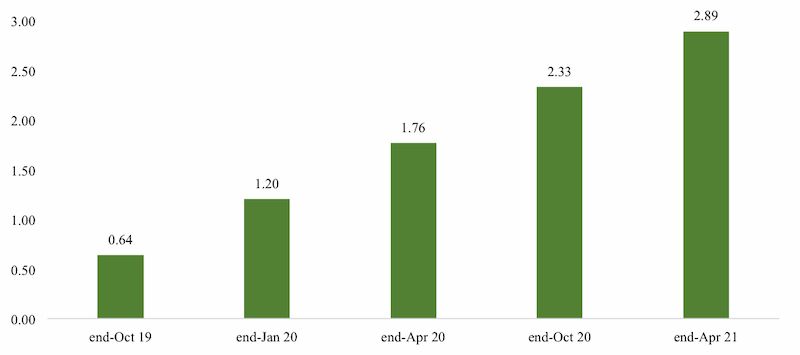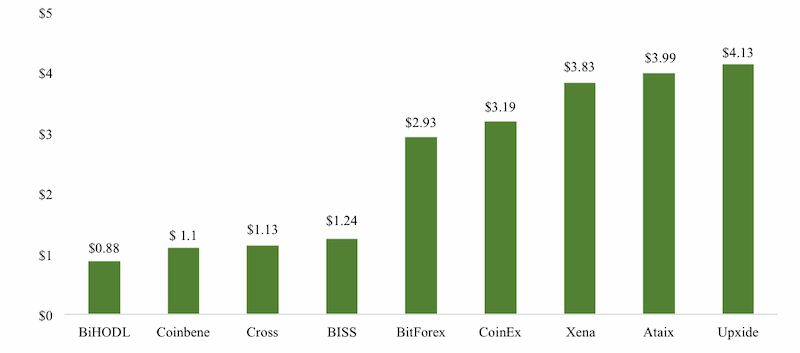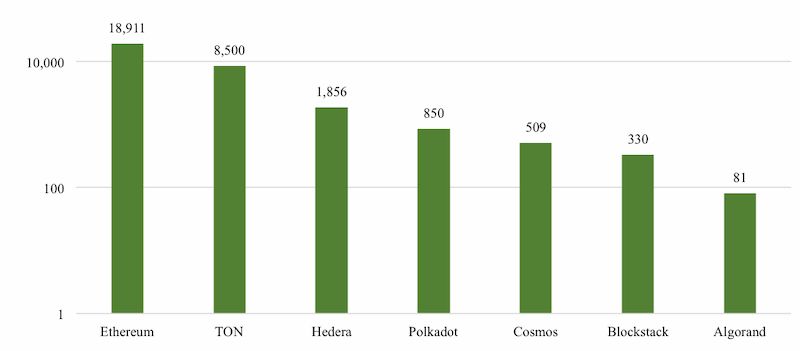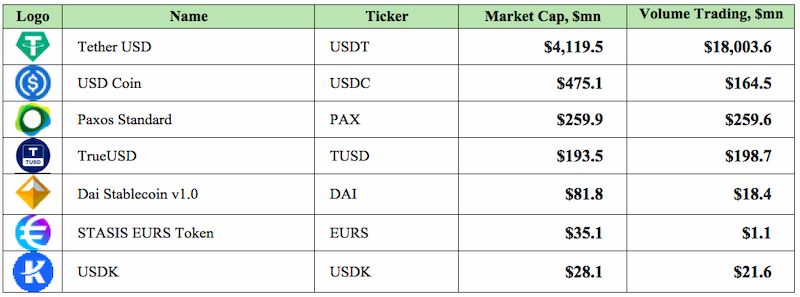Insight into the project at the end of the month TON: the public beta time is extremely short, and there is continuous selling pressure on the token.
HASH CIB, which provides financial solutions for the encrypted digital asset market, has published a detailed report of the Telegram Open Network (hereinafter referred to as TON). The HASH CIB blog has recently added a lot of insight into the current status of TON. These include:
- The existing TON blockchain has limited functionality and is far away from the fully functional blockchain promised by the delivery white paper.
- Most of the promised features and products are still in test/development
- TON has the risk of becoming a centralized network
- GRAM may have continuous selling pressure
- TON faces tremendous competitive pressure
- TON has user and financial advantages
What is TON?
TON is a public-chain project initiated by the founder of the well-known communication tool Telegram Messenger . It consists of eight components, which basically contain all the current infrastructure protocols of the Internet: TON blockchain, TON peer-to-peer network, TON storage, network proxy/anonymity Layer, TON DHT, TON service, TON DNS, TON Payments.
TON raised $1.7 billion to the world's top venture capital in 2018. It is expected that TON will start the main network and distribute tokens on October 31 (according to the investment agreement, if the main network is not online at the end of October, the financing will be refunded). Recently, the US Securities and Exchange Commission (SEC) obtained an emergency restraining order to prevent some GRAM tokens from being issued in the US market.
The following is a summary of the HASH CIB blog. For the convenience of reading, Shinbun has made some revisions.
- BTC retreats and keeps prices above key support
- Was brought to court by the SEC, TON shouted: the past one and a half years have been trying to communicate without results
- Break into the Ethereum DeFi ecosystem and users will have the opportunity to use Zcash on Ethereum
Roadmap delay
TON released a public test network on September 6th, which seems to be a year later than originally planned. According to TON Primer, TON's current development phase is the least feasible network, which should have been achieved in the second quarter of 2018.

HASH CIB's analysis of the test network shows that the team is still far away from the fully functional blockchain promised by the delivery white paper.
The public beta time is only two months
After the code is developed, it is also important to ensure that the network is functioning properly in the actual environment. It must be ensured that the code is not buggy and robust, and this part of the content is often the focus of the work.
The current test network is not yet ready for the average developer. It is extremely unfriendly, lacks relevant instructions, and has no communication channels for developers. This brings a very high barrier to entry for developers.
The test network was released two months before the main network was released, giving developers little time to review the code and no time to run full nodes or verify nodes.
TON has the risk of becoming a centralized network
In a letter to investors, TON said that in order to avoid centralization, neither the Telegram nor the TON Foundation will become verification nodes, but the way the entire project is launched indicates that there is a risk in this direction.
The main network was launched after only two months of public testing, and very few users were able to learn the process and participate in the verification.
At the same time, only a few accounts on the test network met the 10K GRAM threshold for becoming a verifier (Shen Bian's note: this seems to mean that the market lacks interest and enthusiasm for it). The nominator functionality mentioned in the current white paper has not yet been brought online, resulting in the inability of ordinary GRAM holders to delegate their GRAM to different authentication nodes.
Most large investors who buy GRAM may be buyers who use cryptocurrency for the first time, and they have little knowledge of Staking (the real note: this is doubtful), so they are likely to directly entrust their tokens Give a handful of existing certifiers.
If the network is centralized at the outset, it may be difficult to change in the future because there is no incentive to encourage these participants to redistribute power.
There may be continuous selling pressure on the token GRAM
Many investors are the first to buy cryptocurrencies, they may cash out as soon as possible, the first round of investors bought 2.25 billion GRAM (about 80% of the total sales) for 0.38 US dollars, this part of the token will After 3, 6, 12 and 18 months of start-up at the main network, it is released at a rate of 25% each time.
This led to the inflow of 562.5 million GRAM at a cost of $0.38 at the end of January, the end of April, the end of October and the end of April 2021.
The second round of investors held 639 million GARMs, which were priced at $1.33.
By the end of April 2021, all of the 2.89 billion GRAMs that passed Private sale will be on the market.

Although GRAM's repo can help it support prices, a recent letter from TON to investors stated that for regulatory reasons, both Telegram and TON Foundation will not buy GRAM to support prices (because this may be returned) Class is market manipulation).
At the same time, Telegram Messenger has 300 million active users per month, but according to the US Securities Law, selling GRAM through TON Wallet may also face legal risks.
At the same time, HASH ICB believes that it does not follow the original commitment to repurchase GRAM, more likely because of the financial – expected supply is too much, the team is unlikely to waste money to support the price – rather than legal risk.
GRAM's IOU prices range from $0.88 for BiHodl to $4.1 for Upxide.

In order to predict the price trend of GRAM after listing, HASH ICB has calculated the historical performance of tokens of similar projects.
In 2017, Cosmos sold 73.3% of ATOM at a price of $0.10 per token for a price of $17.3 million, which was valued at $23.6 million at the time. In view of the fact that ATOM's market price at the time of writing is about $2.67, its return is 27 times. However, although it has brought considerable returns to early supporters, the average price on the first day since its launch in March 2019 was $6.44, but ATOM fell nearly 60%.
Algorand was highly anticipated when it first debuted in 2019, but ALGO's current market price is $0.25, while private placement is $0.05, and the lock-in time may be changed from two years to five years.
Hedera Hashgraph raised $120 million last year for $0.12, when it was valued at $6 billion, and it is currently trading at $0.036. In the first two days of the initial transaction, a large number of short sellers led to a loan rate of up to 5% for HBAR.
The price just on the line depends on time, mood and other short-term factors, but the long-term performance of GRAM depends on TON's ability to deliver on promises.
HASH ICB estimates the market value of these items and compares them with TON. The market value is the value of all existing tokens (even the foundation's tokens) multiplied by the price, the price of the CMC for the already-online tokens, and the one that is not online. Take the average price of OTC.

In millions of dollars
Zhen Bencong Note: As can be seen from the above figure, TON has the highest market value among the next generation of public chain players.
TON faces tremendous competitive pressure
Since the launch of TON in 2018, the competition situation has undergone major changes, the most prominent of which is the spread of stable currency and the increase in adoption rate.
Tether alone has a market capitalization of more than $4 billion, more than twice the amount of TON's first round of financing of $1.7 billion. And his daily trading volume has more than doubled to $18 billion compared to the same period, which means that each USDT token is changed 4.6 times a day. There are other stable currencies. The market value of USDC is 475 million US dollars in one year, and the market value of TrueUSD is 193 million US dollars. Decentralized head stable currency DAI has also attracted much attention.

Other stable currencies create competition and barriers to GRAM becoming a universal payment method. In fact, people are less likely to choose a less stable asset to pay, why not use stable currency? This may result in GRAM losing the use of peer-to-peer payments, and its use cases will be limited to on-chain services (governance, computing, storage, proxies, etc.).
Although the TON blockchain allows other people to use TON to issue stable coins after launch, the question of how much value this is for GRAM remains to be suspected.
Zhen Bencong Note: The instability of GRAM price may make it impossible to become a payment currency in a small-frequency high-frequency scenario, and the PoS mechanism adopted by TON has the threshold of entry and the suspicion of becoming increasingly centralized, resulting in GRAM wanting to become BTC-like. Value storage currency is also difficult.
The competition in the public chain is not optimistic. At present, TON's ecology is relatively closed, lacking developers and applications. In the short term, TON cannot provide functional products, which also leads to its lack of advantages in the early public chain competition, but lack of application. The path will also lead to the lack of value support for TON's functionality & governance token GRAM.
TON's competitive advantage
Of course, TON also has a very large competitive advantage. Telegram's 300 million monthly users have the potential to make it rapidly expand the ecosystem and be widely adopted.
In terms of the number of users, Ethereum has 75 million addresses, but only 260,000 active addresses per day, and other blockchains are even less pitiful. The update of the Ethereum 2.0 version is late, and may need to wait until the end of 2021. There is a time window for other public chains.
At the same time, it is very rich . The project seems to be built by a small group of internal developers. It has not been marketed yet, and its fund reserve may be sufficient.
Zhen Bencong Summary
TON's current progress is not optimistic, it is not clear how long it will take to truly achieve all of its commitments. It needs to race against ETH 2.0. As the most fundraising project in history, TON is also facing tremendous regulatory pressure.
But with 300 million users, TON is still worthy of attention, looking forward to cashing in products, and looking forward to bringing more users into the blockchain world.
We will continue to update Blocking; if you have any questions or suggestions, please contact us!
Was this article helpful?
93 out of 132 found this helpful
Related articles
- US Presidential Dollar, a scam against the banner of the campaign?
- How to design a token economic model? Start with a meaningful goal
- “Friends Circle” expands the speed of the Banking Department and continues to dig deep into the blockchain potential
- Babbitt column | SEC's supervision on the sniper war against Telegram
- Research Report|Can blockchain technology effectively solve the high-risk problem of inclusive finance?
- An article to understand edge computing and blockchain
- Mining from entry to proficiency (eight) mining industry ecology – peripheral services





